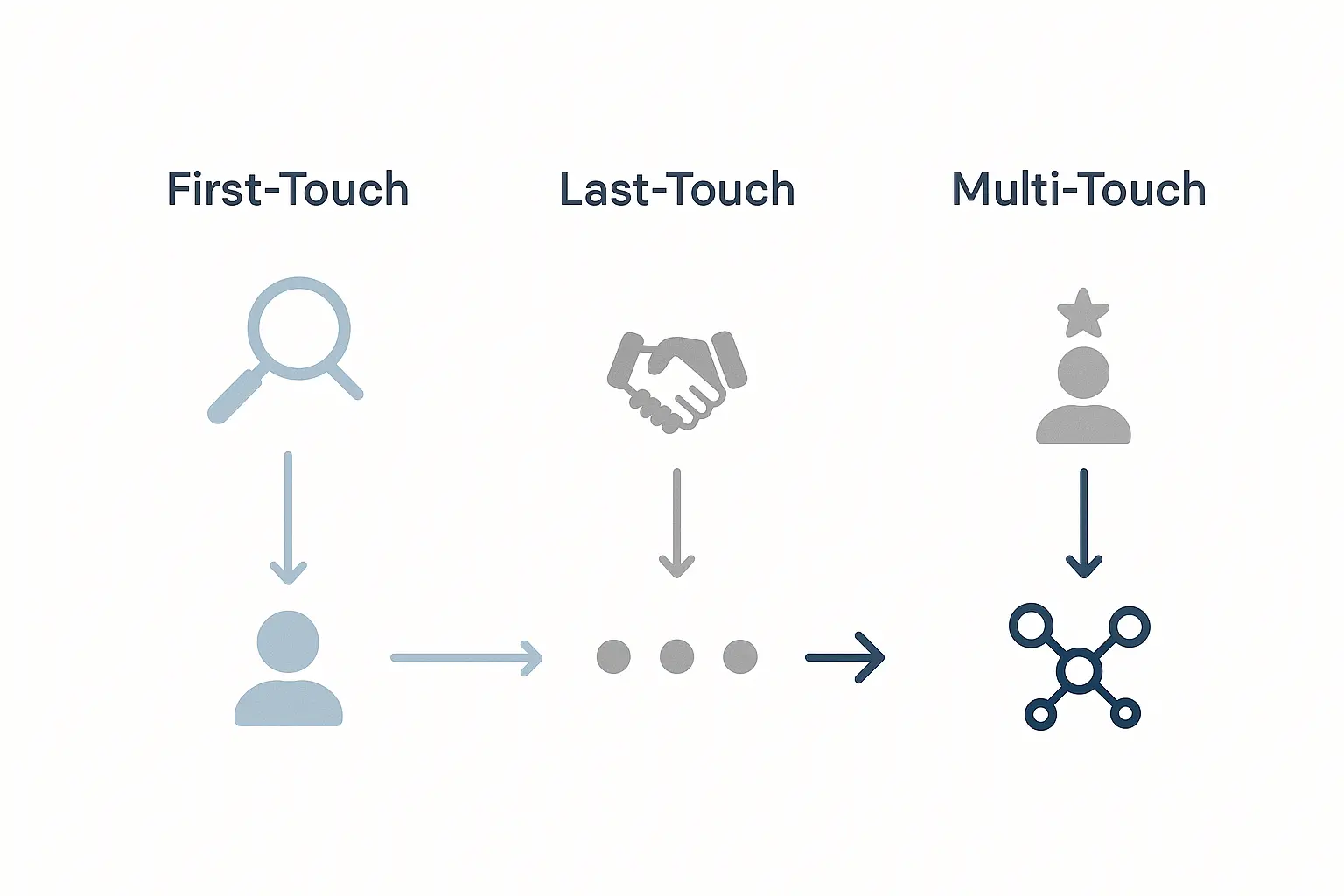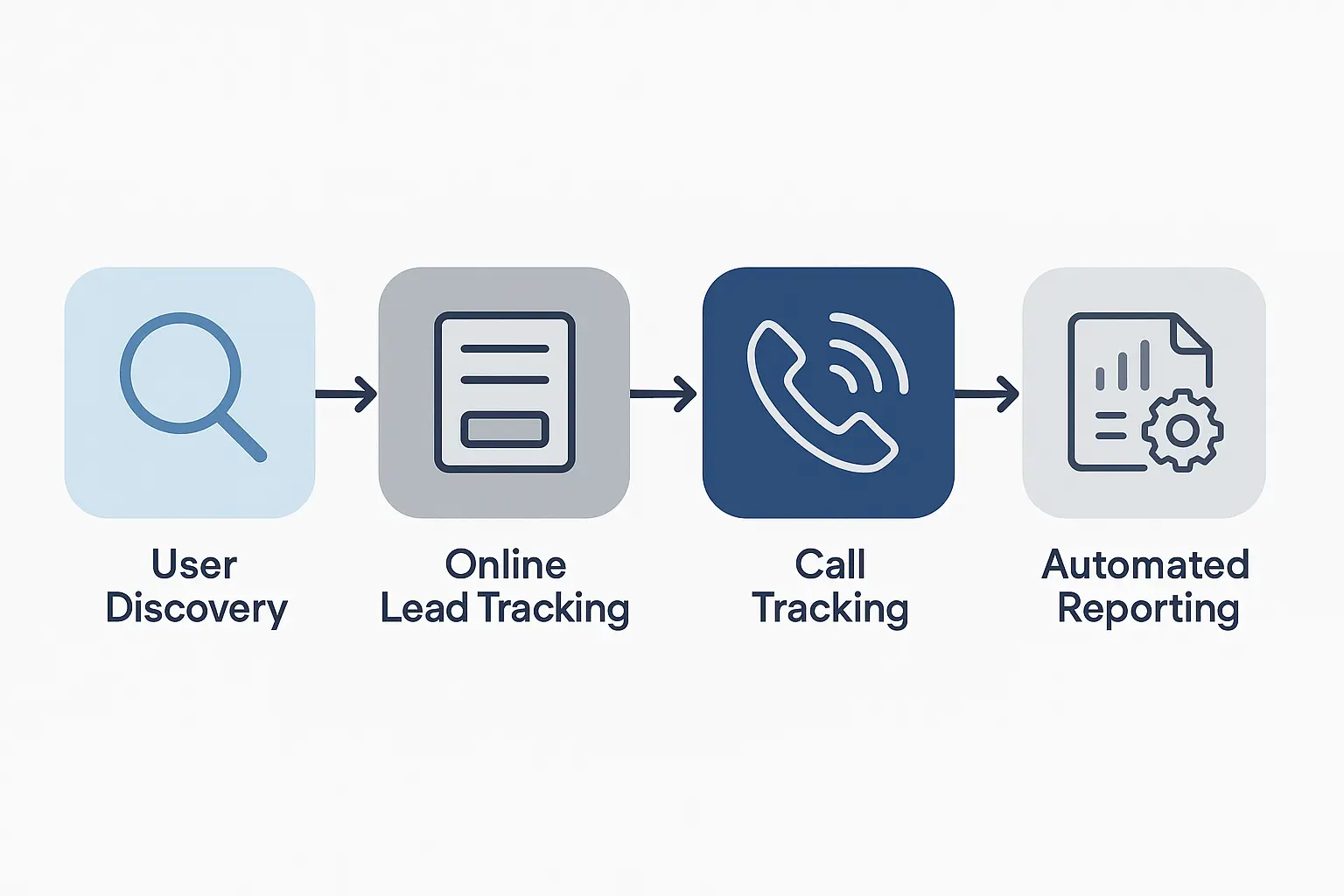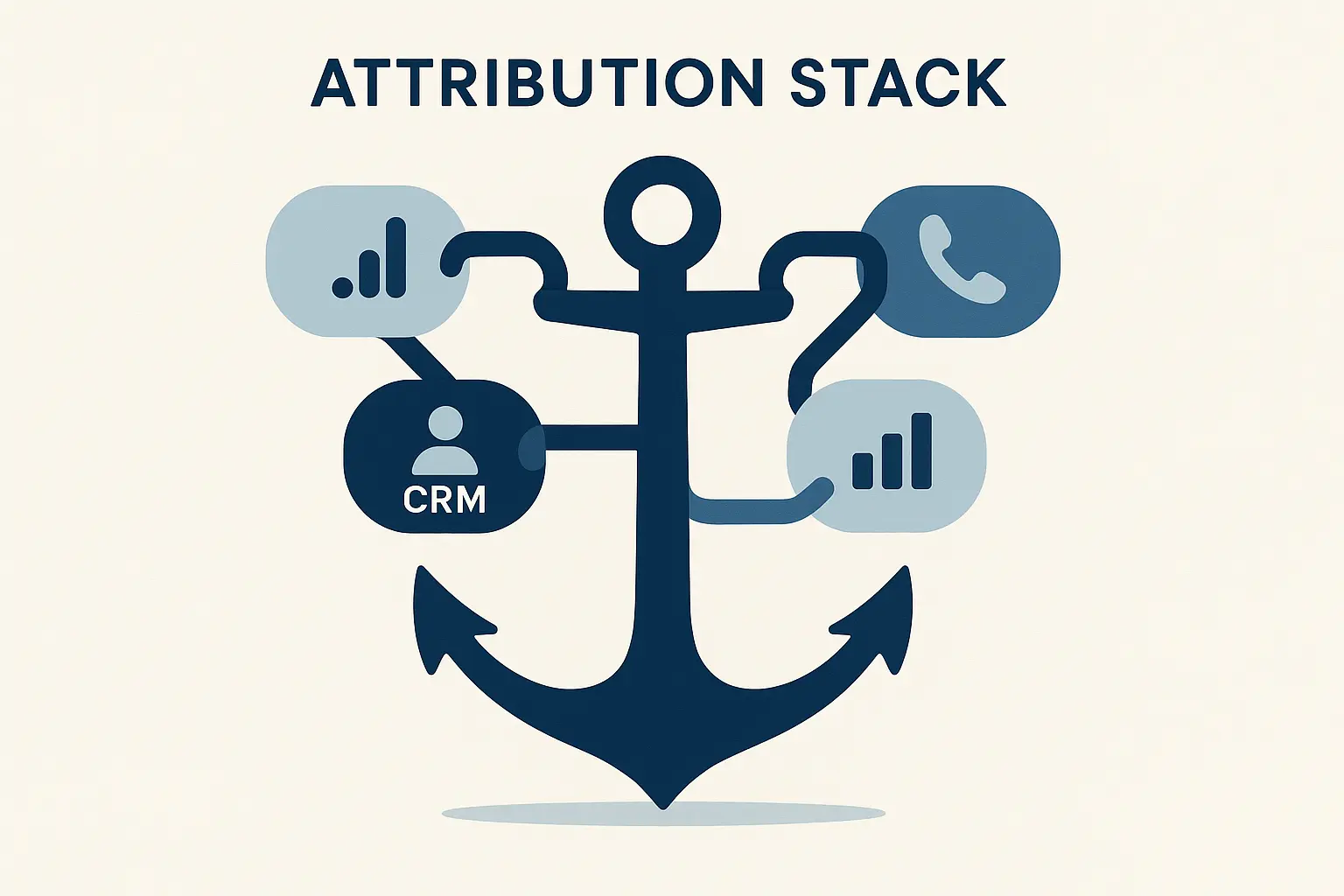You’ve been there before. You walk into a client meeting armed with a beautiful report. Keyword rankings are up, traffic has climbed, and domain authority is stronger than ever. You feel great.
Then your client—a local law firm, a home services contractor, or a consultant—looks at the charts and asks the one question that matters:
“This is great, but… did the phone ring more this month?”
Suddenly, all those impressive metrics feel a little hollow. You know your SEO work is driving real business, but you’re struggling to connect the dots. If this sounds familiar, you’re not alone. A staggering 84% of marketers say proving ROI is one of their biggest challenges.
The good news? It doesn’t have to be a guessing game. By automating lead attribution, you can draw a straight line from your SEO efforts to your client’s bottom line, transforming your reports from a list of metrics into a testament to your value.
What Is Lead Attribution, Really? (And Why It’s Tricky for Service Businesses)
Simply put, lead attribution is the process of figuring out which marketing effort deserves credit for a new lead or customer.
Imagine your client owns a local coffee shop. A customer walks in and buys a latte. Did they find the shop because they:
- Walked by and saw the sign on the street? (Like a Google Business Profile listing)
- Searched Google for “best coffee near me”? (Organic Search)
- Saw a friend’s post on Instagram? (Social Media)
Attribution is the detective work that answers that question. For e-commerce stores, it’s fairly straightforward—a customer clicks an ad and buys a product. But for service-based businesses, the most valuable conversions often happen “offline” through a phone call or a “Request a Quote” form. This is where the trail often goes cold.
Without a system to track these actions back to their source, you’re left presenting traffic charts while your client is counting phone calls. This disconnect is the single biggest threat to client retention. The key is to map every path a potential customer can take from a search engine to a conversion.
The Reporting Trap: Why “Impressions” and “Rankings” Aren’t Enough
For years, SEO reports have been built on a foundation of “vanity metrics.” Rankings, impressions, and click-through rates are important leading indicators—they show that your strategy is on the right track. But they don’t pay your client’s bills.
The problem is compounded by outdated tracking methods. Research shows that 58% of marketers still rely on “single-touch” attribution models, like first-click or last-click.
- First-Click: Gives 100% of the credit to the very first interaction. (e.g., A user reads your client’s blog post, leaves, and comes back a week later to call. The blog post gets all the credit.)
- Last-Click: Gives 100% of the credit to the final interaction. (e.g., The same user searches the company name directly and calls. The branded search gets all the credit.)
Both models are flawed because they ignore the rest of the customer’s journey. This incomplete picture helps explain why only 47% of businesses have a formal lead attribution model in place, leaving most agencies and their clients flying blind. It’s time to move from reporting on activity to reporting on impact.
The Solution: Automating Attribution to Prove Your Worth
Imagine a world where your SEO reports automatically tell clients not just how many people visited their site, but how many of them became tangible leads. This is entirely possible with automated attribution.
At its core, an automated system connects three key data points:
- SEO Action: The keyword you ranked for, the blog post you optimized, or the backlink you built.
- Website Traffic: The user who arrived on the client’s site from an organic search.
- User Conversion: The moment that user picked up the phone or filled out a contact form.
Making this happen requires integrating essential tracking technologies into a seamless workflow. While the setup can be technical, modern SEO automation platforms handle the heavy lifting by combining:
- Dynamic Call Tracking: A unique phone number is shown to each visitor from organic search. When that number is called, the system automatically attributes the call back to your SEO campaign.
- Goal & Event Tracking: Every time a “Contact Us” or “Get a Quote” form is submitted, it’s tracked as a conversion goal in Google Analytics and tied back to the user’s original source.
- Integrated Reporting: All this data is pulled together automatically into a single, easy-to-understand report that speaks the client’s language: leads and revenue.
This automated workflow turns abstract data into a clear, compelling story of success.

What an Automated Lead Attribution Report Looks Like
When you shift from traditional metrics to lead-based reporting, the entire conversation with your client changes. Instead of showing them a keyword that moved from position #5 to #3, you can show them this:
“Our work optimizing the ‘Emergency Plumbing Services’ page generated 12 qualified phone calls and 7 form submissions this month.”
This is the “aha moment” every client is waiting for. It reframes SEO from a cost center into a predictable driver of business growth. A modern, automated report focuses on the metrics that matter most to a service business. With this level of clarity, your client meetings become strategic discussions about capitalizing on success, not interrogations about the value of your work. This is the power of effective white-label SEO reporting—it does the hard work of proving your value for you.
The Agency Advantage: From Service Provider to Growth Partner
Adopting automated lead attribution isn’t just about better reports; it’s about fundamentally changing your agency’s position in the market. When you can directly connect your services to client revenue, you:
- Increase Client Retention: Clients who see a clear return on their investment have no reason to leave.
- Justify Higher Retainers: Your services are no longer a commodity; they are a direct path to growth, and you can price them accordingly.
- Create Powerful Case Studies: You can build a portfolio of success stories based on real business results, not just rankings.
The data backs this up: companies that successfully use marketing attribution are 5.3 times more likely to exceed their revenue goals. When your work helps clients achieve that level of success, you become an indispensable partner. It’s the most effective way to scale your agency and build a sustainable, profitable business.

Frequently Asked Questions (FAQ)
What tools do I need for this?
The foundational tools are Google Analytics for goal tracking, Google Tag Manager for implementation, and a third-party call tracking solution (like CallRail or WhatConverts). The real power lies in automated platforms that integrate these tools and generate reports for you, saving dozens of hours per month.
Is this difficult to set up?
The initial configuration requires technical expertise to ensure tracking codes are placed correctly and goals are firing properly. This is often the biggest hurdle for agencies doing it manually. Using an automated or white-label partner bypasses this complexity, as the setup is handled for you.
What’s the difference between first-touch and multi-touch attribution?
First-touch gives 100% credit to the first marketing channel a user interacts with. Multi-touch models (like linear, time-decay, or U-shaped) distribute credit across multiple touchpoints in the customer journey. While multi-touch is more advanced, even a properly configured last-click model that includes calls and forms is a massive leap forward for most service businesses.
Can I do this for clients in any industry?
Absolutely. This approach is most powerful for B2B and local service-based businesses—plumbers, lawyers, dentists, contractors, consultants, and more—where the primary goal is generating a lead via a phone call or form submission, not an online sale.
It’s time to stop selling SEO and start delivering what clients have always wanted: measurable business growth. By automating lead attribution, you can finally connect your hard work to their bottom line, securing your value and building partnerships that last.


